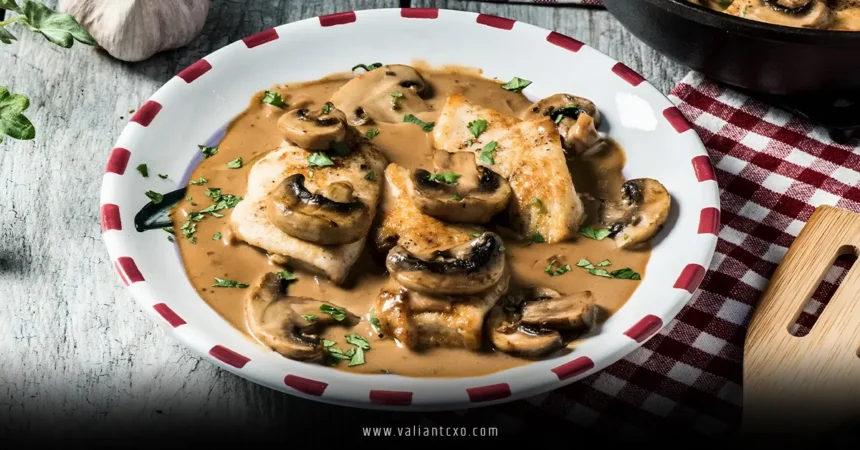Marsala isn’t just a wine; it’s a story bottled up in the sun-soaked vineyards of Sicily. Have you ever sipped a drink that feels like a warm hug from history? That’s what Marsala does. This fortified wine, hailing from the western coast of Sicily, carries centuries of tradition, flavor, and versatility. Whether you’re a wine enthusiast or a curious beginner, Marsala’s rich amber hues and complex tastes are bound to captivate. In this article, we’ll dive deep into what makes Marsala so special, from its origins to its culinary uses, and why it deserves a spot in your glass or kitchen. Let’s uncork the magic of Marsala together!
What Is Marsala Wine?
The Essence of Marsala
Marsala is a fortified wine, meaning it’s blended with a distilled spirit, typically brandy, to boost its alcohol content and shelf life. Produced in the region surrounding the city of Marsala in Sicily, this wine ranges from dry to sweet, offering a spectrum of flavors like caramel, apricot, vanilla, and toasted nuts. Imagine a sunset in a glass—warm, golden, and full of depth. Its unique production process and diverse styles make Marsala a standout in the world of wines.
How Marsala Gets Its Unique Character
The magic of Marsala lies in its production. Winemakers use local grape varieties like Grillo, Inzolia, and Catarratto, which thrive in Sicily’s Mediterranean climate. After fermentation, the wine is fortified and aged using a system called solera, where younger wines are blended with older ones to create consistency and complexity. This method is like passing down a family recipe, each batch carrying a whisper of the past. The result? A wine that’s bold yet balanced, with layers of flavor that unfold with every sip.
The History of Marsala: A Sip Through Time
Origins in Sicily
Marsala’s story begins in the late 18th century when English merchant John Woodhouse stumbled upon Sicily’s robust wines. Seeking a wine that could withstand long sea voyages, he fortified the local vintages, giving birth to Marsala as we know it. By the 19th century, Marsala was a global sensation, rivaling the likes of Port and Sherry. Isn’t it wild to think a single discovery could put a small Sicilian town on the world map?
Marsala’s Rise to Fame
The wine’s popularity soared thanks to its versatility. From British naval ships to European dining tables, Marsala became a symbol of sophistication. Its ability to pair with both savory dishes and desserts made it a favorite among chefs and sommeliers. Today, Marsala continues to hold its own, with producers like Florio and Pellegrino keeping the tradition alive while innovating for modern palates.
Types of Marsala Wine: A Flavor for Every Taste
Understanding Marsala Classifications
Marsala comes in various styles, classified by color, sweetness, and aging. The main colors are Oro (golden), Ambra (amber), and Rubino (ruby), each offering distinct flavors. Sweetness levels range from Secco (dry) to Semisecco (semi-sweet) to Dolce (sweet). Then there’s the aging process, which can span from one year (Fine) to over ten years (Vergine Riserva). It’s like choosing a book from a library—there’s a Marsala for every mood and occasion.
Fine Marsala: The Everyday Sip
Fine Ma-rs-ala, aged for at least one year, is the most accessible style. It’s perfect for cooking or casual sipping, with flavors of dried fruit and subtle spices. Think of it as the friendly, approachable cousin in the Marsala family.
Superiore and Vergine: The Premium Picks
Superiore Marsala, aged for two to three years, brings more complexity with notes of almond and citrus. Vergine Marsala, aged for at least five years, is the driest and most refined, boasting intense flavors like leather and tobacco. These are the wines you pull out to impress your dinner guests.
Choosing the Right Marsala for You
Not sure which Marsala to pick? If you love desserts, go for a Dolce Marsala to pair with chocolate or pastries. For savory dishes or sipping, a Secco or Vergine will hit the spot. It’s like picking the perfect playlist—match the vibe to the moment.
Marsala in the Kitchen: A Culinary Game-Changer
Why Marsala Shines in Cooking
Marsala’s bold flavors make it a chef’s secret weapon. Its nutty, caramelized notes add depth to sauces, while its acidity balances rich dishes. Ever wondered why your favorite Italian restaurant’s chicken Marsala tastes so divine? It’s the wine working its magic, elevating simple ingredients into something extraordinary.
Classic Marsala Recipes
Chicken Marsala: A Timeless Dish
Chicken Marsala is the poster child of Marsala-based dishes. Tender chicken breasts are simmered in a sauce of Marsala wine, mushrooms, and herbs. The wine’s sweetness cuts through the richness, creating a harmony of flavors. Want to try it at home? Use a Secco or Semisecco Marsala for the best results.
Marsala in Desserts: Sweet Perfection
Marsala isn’t just for savory dishes. In Sicily, it’s a star in desserts like zabaglione, a creamy custard whipped with sweet Marsala. The wine adds a velvety richness that makes every bite feel indulgent. It’s like adding a sprinkle of fairy dust to your sweets.
Tips for Cooking with Marsala
When cooking with Marsala, quality matters. Avoid “cooking Marsala” sold in grocery stores—it’s often loaded with salt and lacks the depth of true Marsala. Instead, opt for a bottle you’d drink, like a Fine or Superiore. Use it sparingly to avoid overpowering your dish, and always deglaze the pan to capture those caramelized bits. Your taste buds will thank you.
Pairing Marsala: From Aperitif to Dessert
Marsala as a Sipping Wine
Sipping Marsala is an experience in itself. A chilled Vergine Marsala pairs beautifully with aged cheeses or nuts, making it a perfect aperitif. Sweet Dolce Marsala, served slightly cool, complements desserts like tiramisu or fruit tarts. It’s like a conversation with a wise old friend—complex, warm, and full of surprises.
Food Pairings for Marsala
Marsala’s versatility shines in food pairings. Try a dry Marsala with seafood or roasted meats for a savory match. Sweet Marsala loves chocolate, berries, or creamy desserts. Hosting a dinner party? Serve Marsala alongside a charcuterie board for a crowd-pleaser that sparks conversation.
The Production Process: Crafting Marsala’s Magic
The Role of Grapes and Terroir
Marsala’s soul comes from Sicily’s unique terroir—sun-drenched soils, salty sea breezes, and warm Mediterranean days. Grapes like Grillo provide structure, while Inzolia and Catarratto add floral and fruity notes. It’s like a symphony where every grape plays a vital role.
The Solera System: Blending Tradition
The solera aging system is Marsala’s secret to consistency. Winemakers stack barrels in tiers, blending younger wines with older ones over time. This creates a wine that’s both fresh and mature, like a conversation between generations. The result is a depth of flavor that’s hard to replicate.
Fortification: Boosting the Power
Fortification is what sets Marsala apart from other wines. Adding brandy during or after fermentation increases alcohol content and stabilizes the wine. This process, born out of necessity for long voyages, gives Marsala its signature intensity and longevity.
Why Marsala Deserves Your Attention
A Wine with Staying Power
Marsala’s ability to age gracefully is unmatched. Vergine Marsala, in particular, can last decades, developing richer, more complex flavors over time. It’s like a fine leather jacket—only gets better with age.
Versatility in Modern Cuisine
From fine dining to home kitchens, Marsala adapts to any setting. Its balance of sweet and savory makes it a go-to for chefs and home cooks alike. Whether you’re deglazing a pan or sipping it by the fire, Marsala fits the bill.
A Cultural Treasure
Marsala isn’t just a drink; it’s a piece of Sicilian heritage. Every bottle tells a story of the island’s history, from Phoenician traders to modern winemakers. Drinking Marsala is like holding a piece of Sicily in your hands.
How to Choose and Store Marsala
Picking the Perfect Bottle
When shopping for Marsala, look for reputable producers like Cantine Florio or Pellegrino. Check the label for classifications like Fine, Superiore, or Vergine to match your needs. Want a sipping wine? Go for a Vergine. Cooking a savory dish? A Secco Fine will do the trick.
Storing Marsala Properly
Marsala’s fortification makes it more durable than most wines, but proper storage is key. Keep unopened bottles in a cool, dark place. Once opened, store Marsala in the fridge and consume within a month for peak flavor. Treat it like a cherished guest—give it the care it deserves.
Marsala in Pop Culture and Beyond
Marsala in Literature and Film
Marsala has popped up in literature and film, often as a symbol of sophistication. From classic novels to modern movies, it’s the wine of choice for characters with refined tastes. Ever notice how a glass of Marsala in a scene feels like a nod to elegance?
Marsala as Pantone’s Color of the Year
In 2015, Pantone named “Marsala” its Color of the Year, inspired by the wine’s rich, earthy tones. This reddish-brown hue became a trend in fashion, design, and decor, proving Marsala’s influence extends beyond the glass.
Exploring Marsala Today: Trends and Innovations
Modern Takes on Marsala
Today’s winemakers are experimenting with Marsala, creating new blends and styles to suit modern palates. Some producers are crafting organic Marsala or pairing it with craft cocktails. It’s like giving a classic song a fresh remix—still timeless, but with a new beat.
Marsala in Cocktails
Marsala’s bold flavors make it a star in mixology. Try a Marsala Manhattan, where the wine replaces sweet vermouth, or a Marsala spritz for a refreshing twist. These cocktails are like a passport to Sicily, no plane ticket required.
Conclusion: Why Marsala Matters
Marsala is more than a wine—it’s a journey through flavor, history, and culture. From its Sicilian roots to its role in kitchens and bars worldwide, Marsala’s versatility and depth make it a timeless treasure. Whether you’re cooking a gourmet meal, sipping a glass with friends, or exploring its rich history, Marsala invites you to savor the moment. So, grab a bottle, pour a glass, and let Marsala’s warmth and complexity inspire you. What’s stopping you from discovering this Sicilian gem today?
FAQs About Marsala
What Is Marsala Wine Made From?
Marsala wine is crafted from Sicilian grapes like Grillo, Inzolia, and Catarratto. These grapes are fermented, fortified with brandy, and aged to create Marsala’s signature flavors. The process blends tradition and terroir for a unique taste.
How Should I Use Marsala in Cooking?
Use Marsala in savory dishes like chicken Marsala or desserts like zabaglione. Opt for a quality bottle, like a Fine or Superiore, and use it sparingly to enhance flavors without overwhelming your dish.
Can I Drink Marsala on Its Own?
Absolutely! Dry Marsala, like Vergine, is great as an aperitif with cheese, while sweet Dolce Marsala pairs well with desserts. Chill it slightly for the best sipping experience.
How Long Does Marsala Last After Opening?
Once opened, Marsala stays fresh for about a month if stored in the fridge. Its fortification makes it more durable than regular wine, but seal it tightly to preserve flavor.
Where Can I Buy Authentic Marsala Wine?
Look for Marsala from trusted producers like Florio or Pellegrino at wine shops or online retailers. Check labels for classifications like Fine or Vergine to ensure quality.
For More:valiantcxo.com


